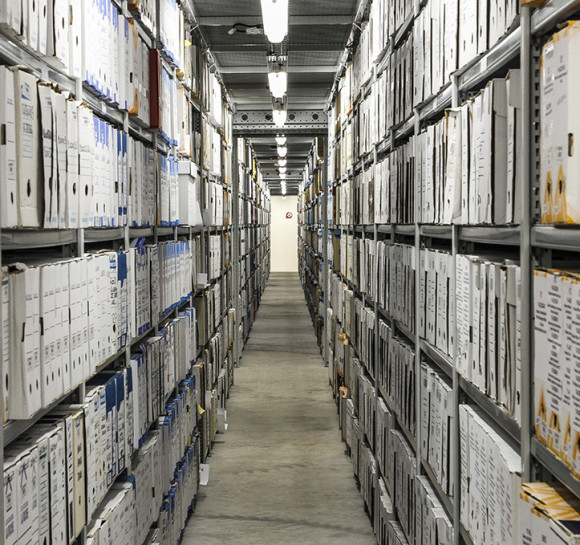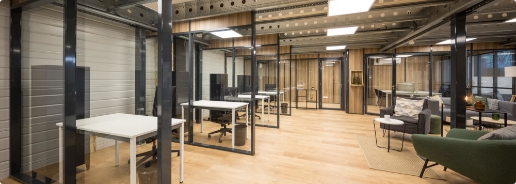
Archive storage: how to preserve your documents?
Archiving is a strategic issue, whether to meet legal requirements or to preserve and maintain a company's memory. Good archiving is the methodical filing of documents, making them easily accessible while keeping them securely stored in suitable premises.

Which archive shelving system should you choose?
A standard-compliant range
We offer you a complete range of archive shelving that complies with the recommendations of the French National Archives and with Instruction DITN/RES/2008/005 of the Archives de France.
Certified "Origine France Garantie
Our range of Prospace+, Proclass and Proroll archiving solutions is manufactured in our French factories and is certified Origine France Garantie.
PROSPACE+ archive box rack

MANUFACTURING
Provost

ECONOMICAL
and modular
A robust range of fixed shelving for storage of your archive boxes and crates. Ideal for semi-living and dead archives or industrial activities.
- Sheet metal or tubular version
- Up to 250kg per level
- Up to 5 meters high
- Easy to assemble
PROCLASS office and suspension file shelving

MANUFACTURING
Provost

AESTHETIC
Ideal for the office
Our range is perfectly suited to the storage of suspension files and binders for your local and office shelving. Ideal for living archives or service sector activities.
- Aesthetics
- Up to 80 kg per level
- Wide range of accessories
- Ready to assemble
PROROLL mobile shelving for archive storage

MANUFACTURING
Provost

SPACE SAVING
Mobile system
Our range of mobile shelving to compact your archives and make them easier to consult.
- Storage volume multiplied by 1.8
- Effortless handling
- Up to 250 kg per level
Why keep your paper archives?
Archiving doesn't just mean storing your documents. It's about classifying them, so that each document is organized and quickly accessible in the event of :
- -Regular or occasional consultation;
- -Verification by the authorities;
- -Legal proceedings.
It is therefore crucial for a company to have an internal or external archive.
What are the different types of archive?
There are generally 3 types of paper archive:
- -Current or living archives: these are documents that are frequently consulted, so they must be easily accessible.
- -Semi-living archives: these documents are less frequently consulted, but are kept for reference or proof purposes, such as invoices. They must remain accessible when needed.
- -Dead or historical archives, or "definitive archives": these are documents that are no longer used, but which are kept for their intrinsic value and as part of a company's memory.
What are the legal retention periods for documents?
The legal retention periods for each type of document are as follows:
- -Commercial documents: 2 to 5 years
- -Accounting documents: 10 years from year-end,
- -Tax documents: 6 years
Here are a few rules to follow for the long-term preservation of your physical archives:
- -Ensure that the storage location meets fire safety standards;
- -Maintain a storage temperature of 18°C;
- -Ensure that the room is properly ventilated;
- -To avoid the risk of flooding, we recommend that no pipes run through the storage area.
- -Keep documents away from light and humidity;
- -Use appropriate storage equipment: cupboards, containers, shelving adapted to the nature of the documents stored (files, folders, cartons, etc.) and preserving their good condition;
- -Give preference to metal shelving and avoid wood;
- -Leave a minimum space of 25 cm between the ceiling and the top of the shelving (or the top of the stored items) to allow good air circulation;
How to organize your physical storage space
To organize your archive management in the best possible way, it's essential to start by carrying out an evaluation audit with the employees who use the documents. This audit will enable you to list your needs and draw up a customized archiving plan. In particular, it will be necessary to assess the frequency with which different documents are consulted, and to destroy archives that are no longer required.
There are 4 key stages in organizing your archives:
- List and qualify your documents;
- Classify these documents;
- Store documents and make them easy to consult;
- Destroy useless documents and permanently archive those that represent the company's memory.





